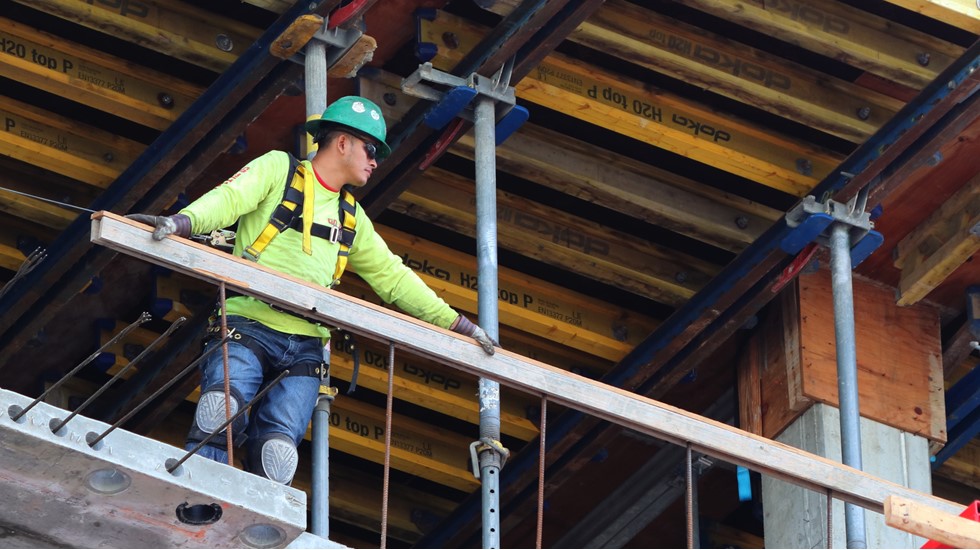Construction spending down three months in a row
Falling home values will dent wealth effects.

September 2, 2025
Construction spending lost ground for the third consecutive month in July, slipping 0.1%. Spending came in 2.8% lower than a year ago. A boost to public sector spending was not strong enough to offset the drop in private sector spending.
Construction spending data includes inflation. Compared to a year ago, costs of inputs (not including labor), rose 2.5%. Costs of lumber, steel, aluminum, other metals, flat glass and construction machinery all increased in July compared to a year ago. Input prices for nonresidential construction jumped by the highest rate since February 2023.
Private residential construction spending eked out a 0.1% gain on stronger single-family home construction. Overall spending fell 5.3% from a year ago. Still-high mortgage rates and deteriorating consumer credit from student loan delinquencies are pressuring housing demand. What is traditionally the busiest time of the year for home buying and building has turned out to be a lackluster summer. Builders who can offer mortgage rate buydowns and other incentives have had more success moving inventory, but the supply of newly built homes available for sale has remained above a breakeven rate for the last three and a half years. Home values in some of the most overbuilt markets have begun to fall, which will dampen the wealth effects tied to housing.
Private nonresidential construction slumped 0.5% on weakness in office, commercial, religious, amusement, power and manufacturing infrastructure spending. The outlier continues to be data centers, which set new records. Within commercial construction, auto dealerships and service providers held up better than restaurants, building supply stores and warehouses. The rush to purchase vehicles prior to additional tariffs kicking in, added to a rush to purchase electric vehicles before tax credits expired, buoyed vehicle sales in July.
Manufacturing facilities construction has been slipping since hitting a peak in June 2024. The few gains we saw were concentrated in computer, electronic and electrical manufacturing, which include semiconductors. A flurry of investment occurred after the CHIPS Act was passed in 2022; more tariffs on semiconductors have yet to be announced.
Public construction spending climbed 0.3% for July and 3.4% higher from a year ago. The bulk of spending occurs at the state and local government levels. Power, water supply, transportation and conservation and development construction spending all rose in July; states’ fiscal budgets are often set in June for the following year. With most states having set their FY2026 budgets, analysis shows state departments of transportation budgets rose 5%.
More investment in power and water supplies will be needed to keep up with the breakneck pace of data center construction. Energy grids are being stressed while energy prices are rising, a major hurdle to more widespread adoption of GenAI models.
Residential investment and nonresidential structures investment will remain a drag on growth.

Yelena Maleyev
KPMG Senior Economist
Bottom Line
Heightened uncertainty and rising input costs are causing projects to be delayed, paused or canceled. Residential investment and nonresidential structures investment will remain a drag on growth in the second half of the year after shaving nearly 0.5 percentage points from GDP in the second quarter and 0.12 percentage points in the first quarter. Rate cuts by the Federal Reserve are expected to resume in September, but it is expected to remain cautious about initial cuts.
Explore more

Construction spending follows a downward trajectory
Policy uncertainty continues to drag on the construction sector.

KPMG Economics
A source for unbiased economic intelligence to help improve strategic decision-making.

Headline figures mask weakness in housing
Affordability challenges are compounding.
Subscribe to insights from KPMG Economics
KPMG Economics distributes a wide selection of insight and analysis to help businesses make informed decisions.
Meet our team
